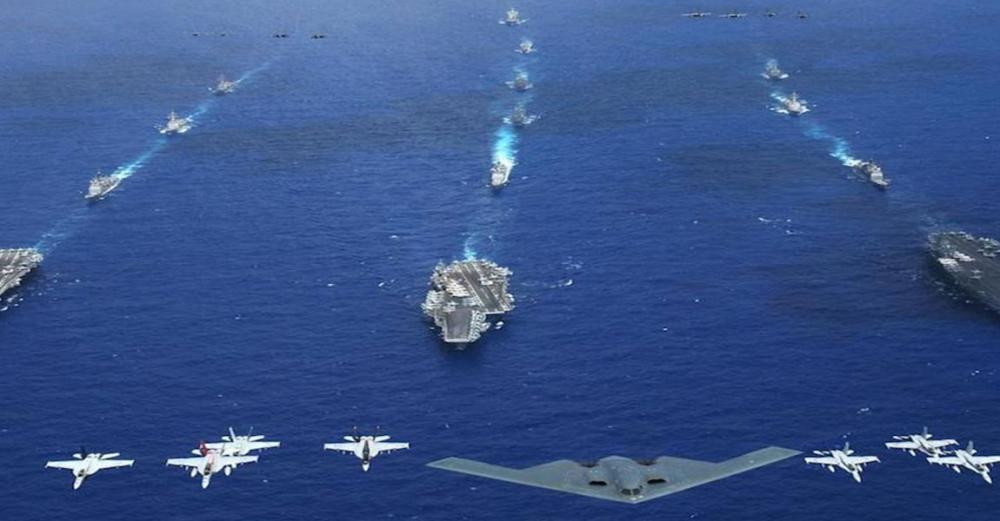Just Earth News | @justearthnews | 02 Sep 2020, 08:45 am Print

Beijing/New Delhi: A Thai canal may emerge as the next bone of contention between India and China, following the ongoing border standoff in eastern Ladakh.
"The most ambitious of all of Beijing’s regional infrastructure projects—the controversial Belt and Road Initiative—comes in: a long-mooted canal across southern Thailand’s Kra Isthmus, the narrowest point of the Malay peninsula, which would open a second sea route from China to the Indian Ocean," reported Foreign Policy.
"This could allow the Chinese navy to quickly move ships between its newly constructed bases in the South China Sea and the Indian Ocean without diverting more than 700 miles south to round the tip of Malaysia," reports the American global affairs publication.
"That would make the Thai canal a crucial strategic asset for China—and a potential noose around Thailand’s narrow southern neck. If Thailand allows China to invest up to $30 billion in digging the canal, it may find that the associated strings are attached forever," it reported.
A Thai canal would fit neatly into Beijing’s plans to encircle India," it reported.
"The Chinese Navy is actively pushing west into the Bay of Bengal and the Indian Ocean, opening an East African logistics base in Djibouti and conducting joint exercises in the region with the navies of Myanmar, Bangladesh, Pakistan, Iran, and even Russia, Foreign Policy reported.
India is also trying to match up to the Chinese stance as it has responded by gearing up for potential future confrontations with China at sea.
In the next step to upgrade infrastructure in the Andaman and Nicobar Islands, Prime Minister Narendra Modi recently inaugurated the country's first undersea optical fiber project.
The foundation stone for this project was laid by Modi on December 30, 2018 at Port Blair.
Modi said the connectivity would now enable endless opportunities in the islands. He said the laying of the 2300 km submarine cable and completing it before the set target was very praiseworthy.
Geopolitical experts see the government's infra push to the archipelago of over 572 Islands in the Bay of Bengal as a step to open opportunities for India in South-East Asia.
It quoted Indian media Hindustan Times referring to a senior government official that PM Modi has unveiled plans to build a transshipment port at Great Nicobar Island at an estimated cost of Rs 10,000 crore.
The Prime Minister said efforts are on to have the first phase of this project operational in the next 4-5 years. Once ready, big ships will be able to dock here. The project is aimed at developing the port as an alternative to the neighbouring ports including those in Sri Lanka and Indonesia’s Banda Aceh, HT said, referring to the official.
“The idea is to turn Andaman into a major transportation hub that is at the heart of India’s Look East policy,” a second government official said, quoted HT.
LAC Tension:
In a fresh attempt to change the status quo at the Line of Actual Control (LAC), the Chinese troops have carried out provocative military movements at Pangong Tso in eastern Ladakh to only get thwarted by India, the country's Defence Ministry said on Monday.
The Indian Defence Ministry said the incident happened on the 'night of 29/30 August 2020'.
"PLA troops violated the previous consensus arrived at during military and diplomatic engagements during the ongoing standoff in Eastern Ladakh and carried out provocative military movements to change the status quo," read the official statement.
This is the first attempt by China to trespass at the LAC since the deadly border clash took place between soldiers of the two Asian giants at the Galwan Valley in eastern Ladakh on Jun 15 night.
In the first deadly clash, in a time span of over 40 years, at least 20 Indian personnel were martyred.
Though China did not disclose the casualties on its side, unconfirmed reports claimed at least 45 Chinese personnel were killed in a befitting reply by the Indian soldiers.
The formal process of disengagement of troops began on Jul 6, following a two-hour-long meeting between India's National Security Adviser Ajit Doval and Chinese Foreign Minister Wang Yi.
Even before the deadly clash on Jun 15, an agreement of disengagement of troops was finalised in the first round of Corp commander-level talks, which took place on the 6th of the same month.
App Banning:
After banning 59 Chinese-linked apps in June, India on Wednesday banned 118 more, including popular gaming app PUBG.
- USD 5,000 fine for illegal entry: US unveils toughest immigration penalty yet
- Bangladesh: Former PM Khaleda Zia’s emergency medical evacuation to London delayed. Know the reason
- Mystery killing in Gaza: Key anti-Hamas leader Yasser Abu Shabab dead
- Washington DC shooting fallout: USCIS indefinitely halts Afghan immigration pending security and vetting review
- Trump accepts Xi’s invitation for Beijing visit during telephone interaction: Talks cover trade, Ukraine, and Fentanyl



-1763561110.jpg)


